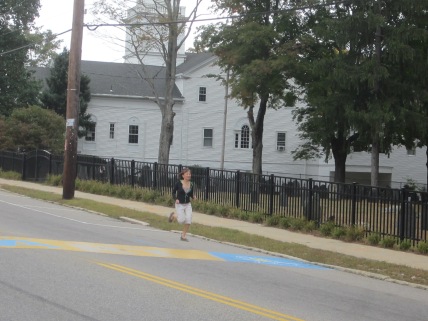The Canadian fall marathon season peaked at the Scotiabank Toronto Waterfront Marathon with the stunning performance of Lanni Marchant who set a new Canadian record of 2:28:00 for the marathon. The former record of 2:28:36 has been famously held by the humble and unassuming Sylvia Ruegger for 27 years. Ruegger at times has seemed almost embarrased for the record to have stood for so long and was at the finish line to greet Marchant.
My fall season will not include a marathon for the first time in 3 years. With the sharp decline in my marathon performance, in relative terms, I have decided to run fewer marathons, with a focus on running a marathon mainly as a celebration of a significant birthday. Last fall I ran the Scotiabank Toronto Waterfront Marathon, in 2011 it was NYC and the year before, the California International Marathon in Sacramento. I have my eye on the Marine Corps Marathon as the stage for my next big birthday celebration. An exception to this general marathon reduction scheme is the 2014 Boston Marathon. Like most who ran last year, returning in 2014 feels necessary in bringing a sense of closure to the 2013 experience.
My fall has been about cross-country running and after November 16th, when the final race of the Ontario Masters Cross-Country Series takes place, my training will be focused on the Boston Marathon. The first step to being prepared for Boston 2014 it seems, is finding a centrally located Boston hotel that is less than $400 a night. Prices seem to have jumped more than 50% from last spring. Advice to those training for Boston is to make your hotel reservation ASAP.
Earlier this fall we passed through Boston on our way to Cape Cod and could not resist taking the exit to Hopkinton. We had some fun checking out a few start line attractions that one might not see while while lining up for the race with a cast of 30,000.
The town of Hopkinton’s motto is “It All Starts Here” and the motto is captured in a bronze life-size statue of George V. Brown the legendary starter of the Boston Marathon for over 30 years. We also enjoyed the newly erected statue of my heroes Dick and Rick Hoyt who I met at the Boston Marathon Race Expo last spring. While viewing the statue a woman walked by and told us that her last name was Hoyt but while she was not related to the famous Hoyts, she wished she were. The Hoyts were mentioned in President Barack Obama’s speech at the Interfaith Service after the Boston Marathon tragedy.
“In the words of Dick Hoyt, who has pushed his disabled son Rick in 31 Boston marathons, we can’t let something like this stop us. This doesn’t stop us. And that’s what you’ve taught us, Boston. That’s what you’ve reminded us, to push on, to persevere, to not grow weary, to not get faint even when it hurts.”
I’ll be thinking about Dick and Rick Hoyt when I run up Heartbreak Hill in the spring.
Yes we can!



















